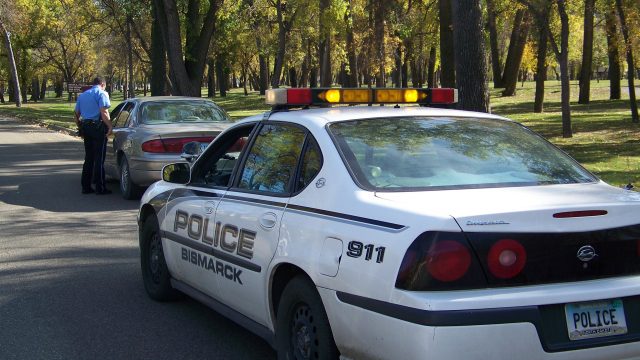North Dakota Sees Slight Increase In 2013 Crime Rate, But Down From 2002

Attorney General Wayne Stenehjem’s office released their annual state crime report for 2013.
It’s a bit of a mixed bag. Rapes, driving under the influence offenses and murders were all down in 2013 from 2012. But drug cases were way, way up.
Overall, the state’s number of violent index crimes increased 7.4 percent. Put in context of population, the state’s crime rate per 100,000 population went up slightly. “The Census Bureau estimate of North Dakota’s population for 2013 is 723,393,” the report reads. “The index crime rate per 100,000 population for 2013 is 2168.3. The index crime rate for 2012 was 2124.8 per 100,000 population. This is a 2 percent increase in the crime rate.”
In his press release on the report, Stenehjem notes that if you account for the state’s transient population the crime rate drops: “When adjusted for the transient population in the oil-producing counties, the state’s crime rate drops to 2040 per 100,000 population.”
Looking at the index crime rate without the adjustment for the “transient” population (crime in the state is crime, as far as I’m concerned) we’ve seen a rise in recent years, but the state is actually down from pre-oil boom levels in 2002, according to past crime reports.

As I’ve noted previously, the increase in the state’s crime report is probably in line with the state’s demographic shift. North Dakota has seen the fastest decline in median age in the nation in recent years, and there’s a strong correlation between age and the likelihood of committing a crime, as this graph from the Bureau of Justice Statistics indicates:

What’s more, North Dakota’s also getting more male (not surprising given that it’s male-dominated industry that is drawing workers to the state), and men are about twice as likely as women to commit crimes, again according to the BJS.
So a small, 2 percent increase in the state’s index crime rate (which accounts for population increases) is understandable when we consider that the population being attracted to the state – mostly younger, mostly male – skews toward demographics more prone to crime.
The oil boom will get blamed for increasing the state’s crime rate (though not beyond pre-oil boom levels, it’s worth noting), but could North Dakota have gotten younger without crime rates increasing?
Update: For the sake of context, this graph shows the state’s population increase. As you can see, there’s been a sharp increase in the last decade.

You can read the AG’s full report below.




